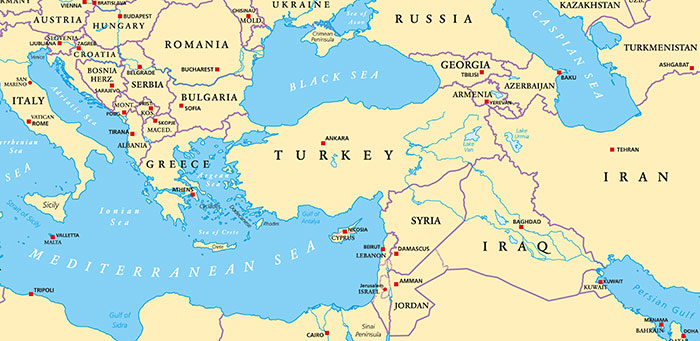Georgia’s Trade With Russia, China & Turkiye Up 32% During 2022
The Caucasus is moving East, not West as competitiveness, energy and supply chains all point to Asia
The Ukraine conflict has moved the Caucasus region further to the East in terms of trade, rather than towards Europe, according to preliminary data from Georgia’s national statistics office and despite EU attempts to persuade countries such as Georgia its future belongs with Brussels.
Georgia’s business community disagrees – most Georgians speak Russian, have long established trade ties, and appreciate lower cost Chinese and Turkish products to maintain their own competitiveness. Georgia is also not part of the EU’s energy policy, seen in Tbilisi as immensely damaging for the manufacturing, and social economies.
These elements have meant that Russia (US$2.20 billion) and China (US$1.67 billion) were the top trading partners of Georgia in its total external trade turnover in the eleven month January-November 2022.
Georgia’s top partners by exports in January-November 2022 were China (US$660.7 million), Russia (US$597.9 million) and Azerbaijan ($595.5 million), while the top markets by imports were Türkiye (US$2.14 billion), Russia (US$1.60 billion) and China (US$1.01 billion). In fact, Tbilisi has been able to maintain a fairly well-balanced import-export budget, with no one country dominating. Again, that would probably not be the case under EU trade membership. China however launched direct train routes between the two countries this year, while Georgia has benefitted from shifting supply chains as it sits on the Middle Corridor between Europe’s Black Sea Ports and Caspian Sea routes to the Middle East, Central Asia and China. Tbilisi is also working on a Free Trade Agreement with South Korea, a smart, if unconventional move as it would permit some access to the RCEP free trade area, which includes China, ASEAN, Australia, New Zealand, Japan and South Korea. Georgia’s economic minister said the agreement would open the Korean market of 50 million consumers “with high purchasing power” to Georgian exporters.

Georgia also has free trade agreements with the Commonwealth of Independent States (CIS), which includes Armenia, Azerbaijan, Belarus, Kazakhstan, Moldova, Russia, Tajikistan and Uzbekistan as well as Turkiye.
Georgia’s top export products during 2022 are as follows:
- Copper ores and concentrates – US$932.9 million (18.5% of total exports)
- Motor cars – US$762.8 million (15.1%)
- Ferro-alloys – US$454.8 million (9%)
- The three top import commodities include:
- Motor cars – US$1.39 billion (11.6% of total imports)
- Petroleum and petroleum oils – US$1.23 billion (10.3%)
- Copper ores and concentrates – US$725.4 million (6.1%)
The Georgian auto industry is an interesting case in point as Chinese and Russian manufacturers both partner with Georgian companies as joint ventures to get their auto component parts into Georgian manufactured vehicles and onto regional export markets – including the EU – due to increased competitiveness.
Overall, Georgia’s foreign trade turnover amounted to US$17.02 billion in January-November 2022, a 32.2% increase over pre-Ukraine conflict 2021 figures.
Georgia’s exports also rose by 31.8%, reaching US$5.03 billion in the 11-month 2022 period, while imports also grew by 32.5%, amounting to US$11.98 billion.
Related Reading





